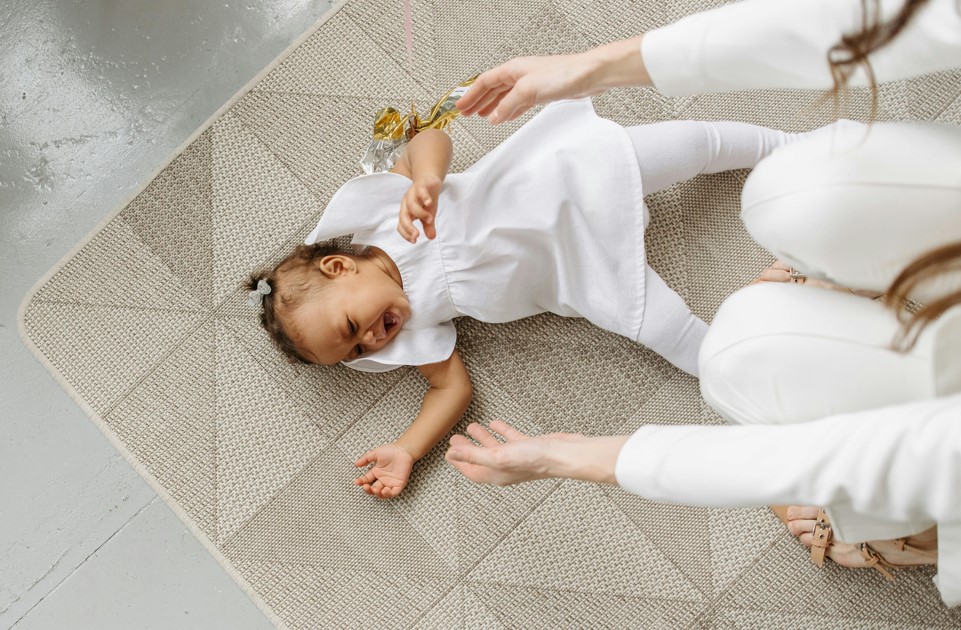The Most Challenging Baby Milestones
“Baby milestones” are supposed to be exciting, right?
Those picture-perfect moments—the first smile, first tooth, first steps. And they are beautiful. But if I’m being honest? Some milestones are less “aww” and more “aaahhh!”
They stretch us. Test us. Grow us. And sometimes leave us crying in the pantry.
Today, I want to talk about the hard baby milestones. The ones that make you question if you’re doing anything right, the ones that Google can’t quite explain, and the ones that remind us just how much we need God’s grace in motherhood.
Here are the ones that challenged me most—and what helped me survive them.
Challenging Baby/Toddler Milestones
1. Sleep Regression
Just when you think you’ve got a rhythm—boom. Baby stops sleeping.

The 4-month regression hit me hard. So did the 6-month, 8-month, and 12-month. And honestly… they never really stop. Growth spurts, teething, separation anxiety—it all disrupts sleep.
There were nights I’d be stuck in her room for four hours. She’d fall asleep on me, and the second I lay her down, eyes wide open. Like I had betrayed her. It happened every night, for what felt like forever.
In the middle of it, I truly thought, “Will this ever end?”
But it did. Eventually.
What helped me:
- “Reminding myself this is one of the hardest phases—and it won’t last forever.” I find this advice online a lot. But it did not help me!!! Take one day at a time, don’t think too far!
- Listening to hymns or Scripture through headphones in the dark
- LOTS of coffee the next day (ha!)
- Let her cry out. Depending on how old your baby is, let her cry for 10 to 15, or 20 minutes, then comfort and put her down again. Try this a couple of times until she sleeps. If you find letting your baby cry is too harsh, make this your last resort. When you do, I find this super effective. She stopped it just after 2 nights of trying.
2. Separation Anxiety
This phase hit me like a wall. Around 9–12 months, my baby suddenly realized I could leave her, and that was absolutely unacceptable in her eyes.
Putting her down became almost impossible. She wouldn’t just cry, she’d cry until she threw up.
I couldn’t leave. I had to wait until she was completely asleep—dead asleep—and that took a long, long time. And even then, if I misjudged the moment and left too soon? All that waiting was wasted. We’d have to start all over again.
To be honest? I didn’t have a magic solution for this one.
What did work—eventually—was letting her cry through it (yes, even the throwing up). It only took a few nights (under five), and after that, she improved so much. Cleaning up vomit at 2 a.m. wasn’t fun—but seeing her settle more easily later was a win.
This phase is deeply emotional for both baby and mom. If you’re in it, know that you’re not doing anything wrong, and you will both come out stronger on the other side.
3. Picky Eating

I know picky eating isn’t technically a milestone—but it sure feels like one.
My first child hit this milestone overnight when she turned two (at least it felt like overnight). She used to eat so well! We did baby-led weaning, and I was so proud of her adventurous palate. But one day, suddenly, it was:
“I don’t like that.”
“I don’t want to eat this.”
“Can I have a snack?”
All she wanted was snacks. Chicken? No. Veggies? Definitely not. The same child who once happily munched on steak and broccoli now refused to eat dinner most nights.
This is still an ongoing battle. I’ve tried patience. I’ve tried pressure. Nothing has “worked” yet—and honestly, I’ve accepted that this is probably a long game.
I do believe the following helps if you do it consistently:
- Presenting healthy food options consistently, even when they’re rejected
- Being a good role model: eating what I hope she’ll eventually try
- Lowering pressure at mealtimes while staying firm about not replacing meals with snacks
It takes enormous patience. And probably more prayers than I can count.
4. Potty Training
(The milestone that will test your flexibility and your flooring)
This one, like breastfeeding, comes with a million opinions, and none of them seem to agree. If your child trains quickly and easily? Lucky you! If not… you’re not alone.
Mine was hard. Peeing wasn’t the issue; it was pooping. And it wasn’t that she couldn’t do it. Sometimes she would, sometimes she wouldn’t. Maybe she was constipated from picky eating. Maybe she was just unwilling. Maybe both. Who knows? She couldn’t explain it clearly, and I felt like I was flying blind.

Two things helped us:
- Getting her a little potty she loved. Just having her own space motivated her.
- Making it non-negotiable. After every meal, she had to sit on the potty for 10 minutes, no exceptions. I’d let her bring toys or even watch a little TV just to keep her seated.
It wasn’t magic, but it moved us forward. Slowly. And I clung to that progress like gold.
5. The Big Kid Bed Transition

This one wasn’t quite as challenging for us, maybe because we waited until our daughter was older. We tried transitioning her once, and it was a total fail. She was too excited, couldn’t settle, and wasn’t used to the freedom.
After two weeks of bedtime chaos, she told us she wanted her crib back. And honestly? I didn’t expect that, but I was relieved. We switched her back, and she slept like a dream.
About six months later, we tried again, and that time, it worked. She still mentioned missing her “old bed” for a while, but she adjusted beautifully.
Our son, on the other hand, climbed out of his crib, so that was the end of that. If that’s your case, you may have to move to a floor bed sooner. Just be sure the room is totally safe for that level of freedom (outlet covers, furniture anchored, etc.).
Every child is different. And so are their timelines.
6. Tantrums (Terrible Twos and Horrible Threes)

Tantrums are inevitable. And unpredictable.
Every child is wired differently, and so should be the way we respond. My daughter? She needs time. She cries hard and long and needs to get it out. Then, at the end, she just wants a hug. No logic. No reasoning. Just time and comfort.
My son? His tantrums are shorter but more intense. Timeout works well for him. Giving him space to cool down helps reset his body and emotions.
Being in public with a melting toddler is its own level of stress. People do stare. But I’ve learned to tune them out. This isn’t their child. It’s mine. I have to do what I know is best.
If the scene is too much, I’ll take my child to the car or a quiet hallway to calm down. Not as a punishment, but as a reset, for both of us.
Tantrums are hard. But they’re also part of emotional development. It’s not always a discipline problem. It’s a growth process.
Final Memo
Not every child will go through every one of these milestones. Some skip the hard stuff entirely (we’re happy for you!). But if your child hits one, or more, or all, know this:
You are not alone.
You are not failing.
And you don’t have to carry it all by yourself.
Jesus sees your long nights, your frustrated tears, and your whispered prayers. Ask Him for guidance when you don’t know what to do. Ask Him for peace when the moment feels bigger than your patience. Ask Him for joy, even in the hard milestones.
Motherhood isn’t just about reaching the next stage.
It’s about learning to lean on Jesus at every stage.
So, when the sleep regression hits, or your child screams “NO!” at dinner again… take a deep breath. Put on some praise music. Pour the coffee.
And remember:
You were made for this.
God is with you.
And yes, even the hard baby milestones are shaping both of you for good.

